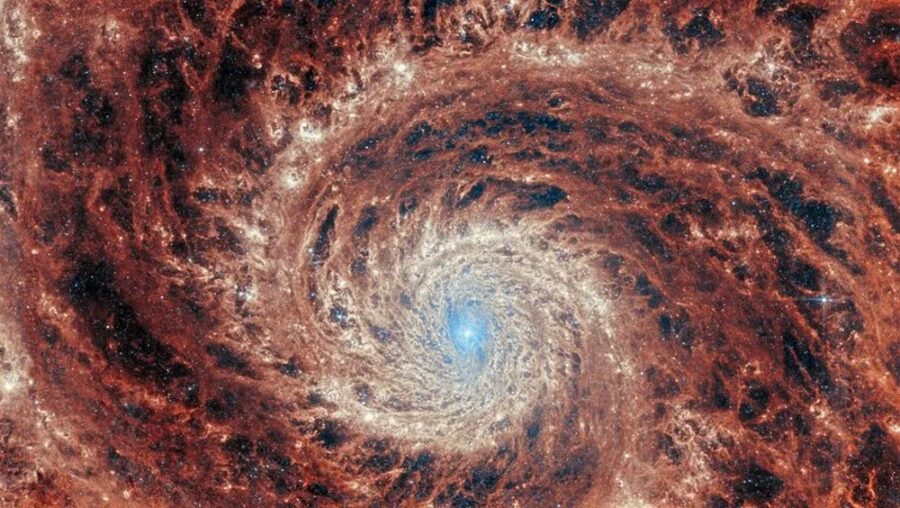Whirlpool Galaxy Discovered And It’s Breathtaking To See
The James Webb Space Telescope has captured some impressive visuals but nothing that compares to their latest subject—The Whirlpool Galaxy. The Whirlpool Galaxy, also known as M51, has been observed by astronomers for decades thanks to its proximity to Earth and its prominence in the northern sky, but never with this amount of clarity. Seeing the swirling vortex of celestial matter through the lenses of the JWST is like discovering it for the first time.
New images have been released from the James Webb Space Telescope of the Whirlpool Galaxy.
According to Science Alert, the images come courtesy of the telescope’s NIRCam—or Near Infrared Camera— and MIRI—Mid-Infrared Instruments. The NIRCam and MIRI were able to collect images that show incredible detail and even expose previously unseen features hidden among the Whirlpool Galaxy’s spiral arms. Specifically, the JWST was able to pick up a type of warm dust that collects along the spiral arms of the galaxy and shows up as dark red when photographed.
The observation of the Whirlpool Galaxy by the JWST is part of a series of known as Feedback in Emerging extrAgalactic Star clusTers, or FEAST.
The galaxy got the name Whirpool Galaxy based on its swirling shape that somewhat resembles a watery vortex. The pictures from the JWST show not only the red of the newly discovered dust but also bright patches along the galaxy’s arms that represent the formation of new stars. These star-forming regions lead all the way down into the blue and white central core of the galaxy.

Meanwhile, the orange and yellow colored areas of the Whirlpool Galaxy are sections full of ionized gas, a byproduct of recently formed star clusters. The JWST is capable of capturing such a precise image that it even reveals a series of black bubbles located within the galaxy’s arms, which allow astronomers to see through the above-mentioned dust and other objects and observe the distant stars that lie beyond the Whirlpool Galaxy for the first time ever.
The Whirlpool Galaxy can be found 31 million light-years away as part of the constellation Canes Venatici. Previous telescopes like the Hubble Space Telescope have captured images of the Whirlpool Galaxy, but the previous pictures lacked the detail on display in the JWST images.
A small, yellowish galaxy identified as NGC 5195 exists at the end of one of the Whirlpool Galaxy’s arms and is thought to be partially responsible for the distinct shape of Whirlpool’s spiral arms. Though NGC 5195 is smaller than M51, it’s thought to have enough gravitational influence to alter the shape of its bigger sibling.
The observation of the Whirlpool Galaxy by the JWST is part of a series known as Feedback in Emerging extrAgalactic Star clusTers, or FEAST. The FEAST initiative was put together in hopes of shedding some light on the “interplay between stellar feedback and star formation” in parts of space that fall outside the boundaries of our own galaxy, the Milky Way.
The Whirlpool Galaxy can be found 31 million light-years away as part of the constellation Canes Venatici.
Feedback, in this instance, refers to “stellar feedback,” a term used by astronomers to describe the energy produced by stars that flows back into the environment that created them. Measuring the feedback from regions of space where stars are born, such as inside the Whirlpool Galaxy, is a crucial part of determining the rate at which stars form together. Only through a better understanding of stellar feedback can scientists create more accurate models of star formation.












